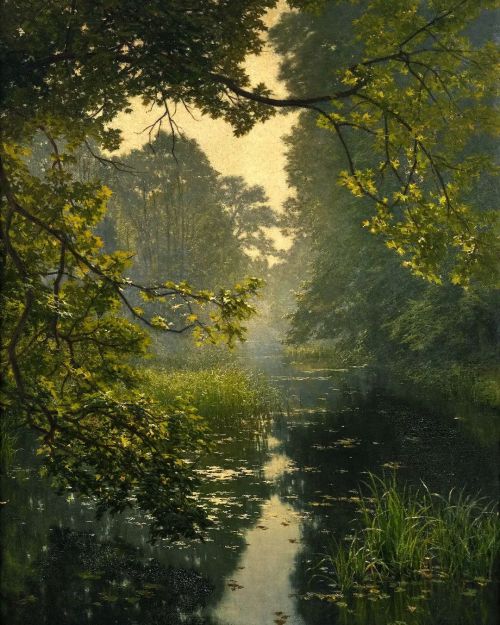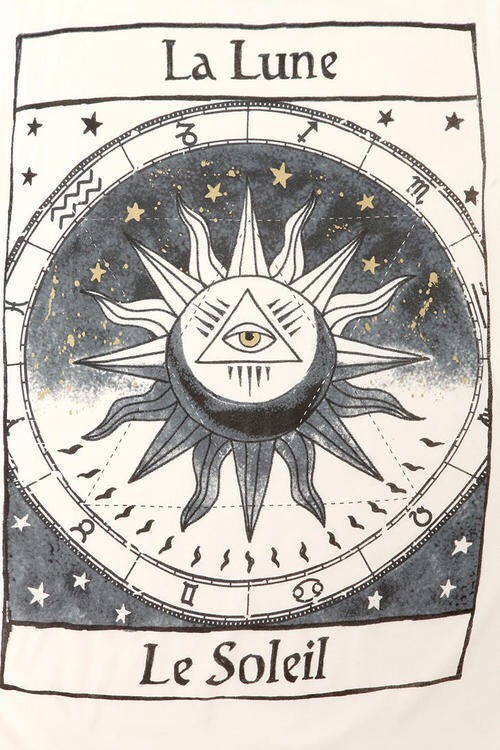Dhow House Lamu
Dhow House Lamu









I had a dream and it was called Dhow House in Lamu, Kenya.
Owned and designed by Katy Barker along side architect Laurent Butazoni.
How divine is the Swahili and modern combination.
One day I will post my own pictures of this beautiful home.
Photos by http://www.dhowhouse.co.uk
More Posts from Visionofsplendor and Others
A GEM in TANGIER









Bruno Frisoni found a house in Tangier and did it up together with Herve van der Straeten and it turned out divine and basically thats all you need to know.
Sourced via Vogue where there is the storyline written by Hamish Bowles and photographed by Francois Halard, mais bien sur. Now there is a melting pot of very talented gentlemen.
Oh c'est beaux x

Henri Biva (French, 1848-1928)
Pond in the mist, 1910
Oil on canvas
Big In Japan : Kaikado





















The History of Kaikado
Kaikado was established in 1875, shortly after Japan opened its doors to the rest of the world. With civilization came the import of tin plate from England. Tin was used for the plating of steel, and was considered a fashionable foreign-made item. In the Edo era, canisters made from tin were a commonplace means of storage for tea, as were jars made from china or earthenware. It was the company's founder, Kiyosuke, who first designed the tin tea caddy and made it into a commercially available item. His aim was to provide a well-designed, functional tea caddy capable of storing the type of tea leaves commonly sold by dealers. Showing sympathy for local traditions, Kaikado designed a product that would leave a lasting impression on the discerning Kyoto locals. A great many orders were received from tea dealers and hardware merchants alike. The tea caddies were tailor made to the requirements and needs of each and every store. In a time before the invention of the refrigerator, air tightness was key to maintaining the flavour and quality of freshly picked leaves for a period of one year.
Kaikado's tea caddies were a blessing in disguise to tea dealers, in particular in terms of their functionality. Before long, there was an increase in the number of stores supplying the tea caddies, in Kyoto and throughout Western Japan. A manufacturing process that involves anywhere between 130 to 140 steps, the hand-made tea caddies have virtually remained true to the designs established by Kaikado's founding generation. The die and mold used in the early years of the company is still in use today, whilst some shapes of tea caddy used 130 years ago are still in production today.
In 1916, the company was succeeded by Otokichi. The second generation, Otokichi was said to be the most able craftsman of all generations. The third generation, Hikojiro, successfully led the company through difficult times in which, preceding and after the 2nd World War, materials were scarce and tools also had to be sent away in the name of war. The period of economic growth that followed the war years, saw the advent of cheaply made, inexpensive tea caddies. Dissatisfied with this, the fourth generation successor, Shouchi, continued to make tea caddies in the traditional manner, at the same time developing a caddy made from copper. The fifth generation, Seiji, started producing tea caddies to sell to the general public and for this purpose introduced a portable caddy suited to the individual user. Seiji also developed a caddy made from brass. The sixth successor, Takahiro, developed a two-tiered tea caddy. He initiated the first ever collaborations with tea brands, and marketed his caddies abroad. Whilst maintaining tradition, Takahiro set his sights on the global market. Adding a new element per generation is a tradition that Kaikado has carried throughout its history.
Even as its horizons widened, Kaikado has made the same tea caddies it has always done. Doing away with excessive detail, the caddies are based on the pursuit of function. Their simple forms are overflowing with functionality. Each time a Kaikado tea caddy is handled, it develops a unique sheen specific to the type of material from which it is made. Witnessing the changes in color that develop over time will surely bring great joy to the person wishing to nurture their caddy over time. A tea caddy that has been filled with the memories of 100 years can be passed onto the next generation to treasure. With the hand-made materials and methods that comprise Kaikado’s selection of caddies, one can enjoy the expressions unique to each and every tin caddy, or the rapidly changing appearance of copper, or the mellow changes of color that make the brass tea caddies so unique. These qualities forming an important characteristic to its tea caddies, Kaikado have selected only materials with which this can be achieved.
The precision inherent in the hand-made process of the tea caddies is also unique to Kaikado. The double-walled construction guarantees excellent air tightness and will protect tea leaves from humidity whilst helping them to maintain their scent. In addition to being used for storing tea leaves, the caddies be used to hold a wide variety of foodstuffs. They can also be used to store English or Chinese tea, as well as coffee, spices, pasta and grain. We are confident that our customers will not only enjoy the long-lasting quality of our tea caddies, and the scents that arise with each removal of the lid, but experience the difference in function between our caddies and standard containers or boxes.
Having spanned 130 years of history, it is our wish to maintain the art of and passion for our tea caddies for future generations to enjoy.
Love the story of Kaikado, wonderful craftsmanship and design, you can have them customize your logo or any design on them and combine the brass, silver and bronze together, they are also useful for to store other ingredients like herbs, pasta and coffee. For more information and ordering please visit their beautiful site. Your kitchen would look magnificent with these caddy's gleaming.
Utsukushii xo
Pictures sourced via,
www.kaikado.jp
www.designboom.com

NEW SITE FOR VISION OF SPLENDOR

Photo by Vision of Splendor Miami January 2014
Vision of Splendor has a new site!
Will keep this tumblr site but content will change in the future, but for upgraded version go to the new site below.
Follow me there xo
www.visionofsplendor.com
California Niemeyer















While researching all of Oscar Niemeyer's work on the week of his passing I stumbled upon these images.
This 1963 Californian Mid Century Modernist house has an incredible history, It was commissioned by Film maker Josef Strick and his wife Anne after meeting Oscar Niemeyer in a film festival in Brazil. It was a complicated commission as Niemeyer was not allowed to enter the country because he had connections to the Communist party, regardless that he had designed the United Nations in New York. Not putt off by the challenge he cleverly designed the house via Aerial photographs and Topographical surveys. How is that possible! There was no internet or fax in those days all by mail from California to Brazil!
Oscar your genius will never be forgotten.
Que Marvilha xo
Sourced via The189.com, Architectural Digest
Farewell Baroness Thatcher

Baroness Thatcher in 1974 by Terry O'Neill
October 13 1925 – 8 April 2013
"Any woman who understands the problems of running a home will be nearer to understanding the problems of running a country." 1979, the year she became prime minister.
Back at The Ranch

















Howdy!
The Double RL Ranch outside of Tulleride Colorado is not your average ranch, No Sir it is not.
One of the many homes of Ralph & Ricky Lauren the ranch is set in a mere 16,000 acres of beautiful land. With a barn that's over 200 years old, Tepees hand painted by Native Indians, with Cabins named Little Bear & Elkmeadow and a 1960's Silver airstream trailer, the choice of accommodations is vast and charming.The Spirit of the Old West Americana that Ralph Lauren does so well, for me the Lauren Family got this so spot on.
Last August the Double RL Ranch was the perfect backdrop for the wedding of David Lauren and his bride Lauren Bush who transported everyone in time with the fantastic traditional Old West/Meets Little House in the Prairie theme in Lauren style and yes of course the wedding dress was designed by Ralph.
Ralph and Ricky can you be my in-laws too?? xo
Photos Via Architectural Digest and Vogue
Ciao Italia

Photo Via Persol

Photo Marcello Mastroianni Via Persol

Photo Via Garance Dore

1938 Alfa Romeo Touring Berlinetta via Sportscardigest

Photo Anna del Russo Via Garance Dore

Photo Via Bvlgari

Photo Via The Sartorialist

Photo via Garance Dore

Photo Via the Sartorialist

Source unknown

Photo via Pasticceria Marchesi
En route to Milano for some Mangiare , Sole e Shopping.
Arrivederci xo
Cuixmala


























This stunning and vast estate of 25,000 acres of land, beaches , lagoons was the private home of the late Sir James Goldsmith. Set on the Mexican Pacific coast near Careyes Cuixmala is a special place. The land is dotted with villas , casitas and bungalows all in different locations and sizes.
With an incredible range of activities from horse riding, mountain biking , tennis , volley ball , kayaking, fishing , surfing to name just a few. The most interesting is that Cuixmala is set on nature reserve , home to 270 types of birds, wild boar , deer , foxes , crocodiles and the endangered Jaguar. Not to leave out the Zebras and the Turtle Protection Programme, the giant sea turtle comes to lay their eggs every year were the staff gathered them to protect them from predators and poachers until they hatch and then are returned to the sea. Guests are able to assist with the guidance of biologists, have look at the wonderful Eco Cuixmala Foundation Website for more information.
There is also a club house and a boutique and of course spa services. At Cuixmala you can rent individual rooms at the various locations or rent the whole estate for a big party or wedding. How amazing would that be.
So wish I was there right now, missing the sun and nature.
Que padre x
www.cuixmala.com
www.ecocuixmala.org
All photos via Cuixmala
-
 lkinzer16-blog liked this · 13 years ago
lkinzer16-blog liked this · 13 years ago -
 2000jellyfishfuckingjesus-blog reblogged this · 13 years ago
2000jellyfishfuckingjesus-blog reblogged this · 13 years ago -
 familyhouse reblogged this · 13 years ago
familyhouse reblogged this · 13 years ago -
 no1butmi reblogged this · 13 years ago
no1butmi reblogged this · 13 years ago -
 letsdothis12 reblogged this · 13 years ago
letsdothis12 reblogged this · 13 years ago -
 sarapalmtree1 reblogged this · 13 years ago
sarapalmtree1 reblogged this · 13 years ago -
 sarapalmtree1 liked this · 13 years ago
sarapalmtree1 liked this · 13 years ago -
 visionofsplendor reblogged this · 13 years ago
visionofsplendor reblogged this · 13 years ago
